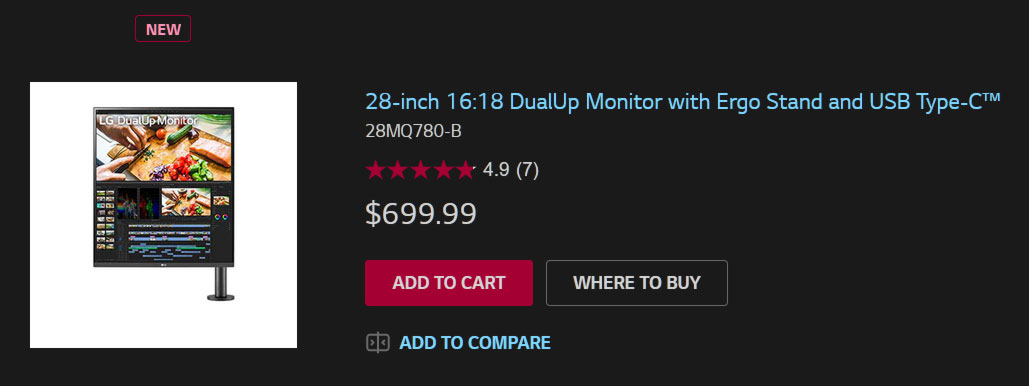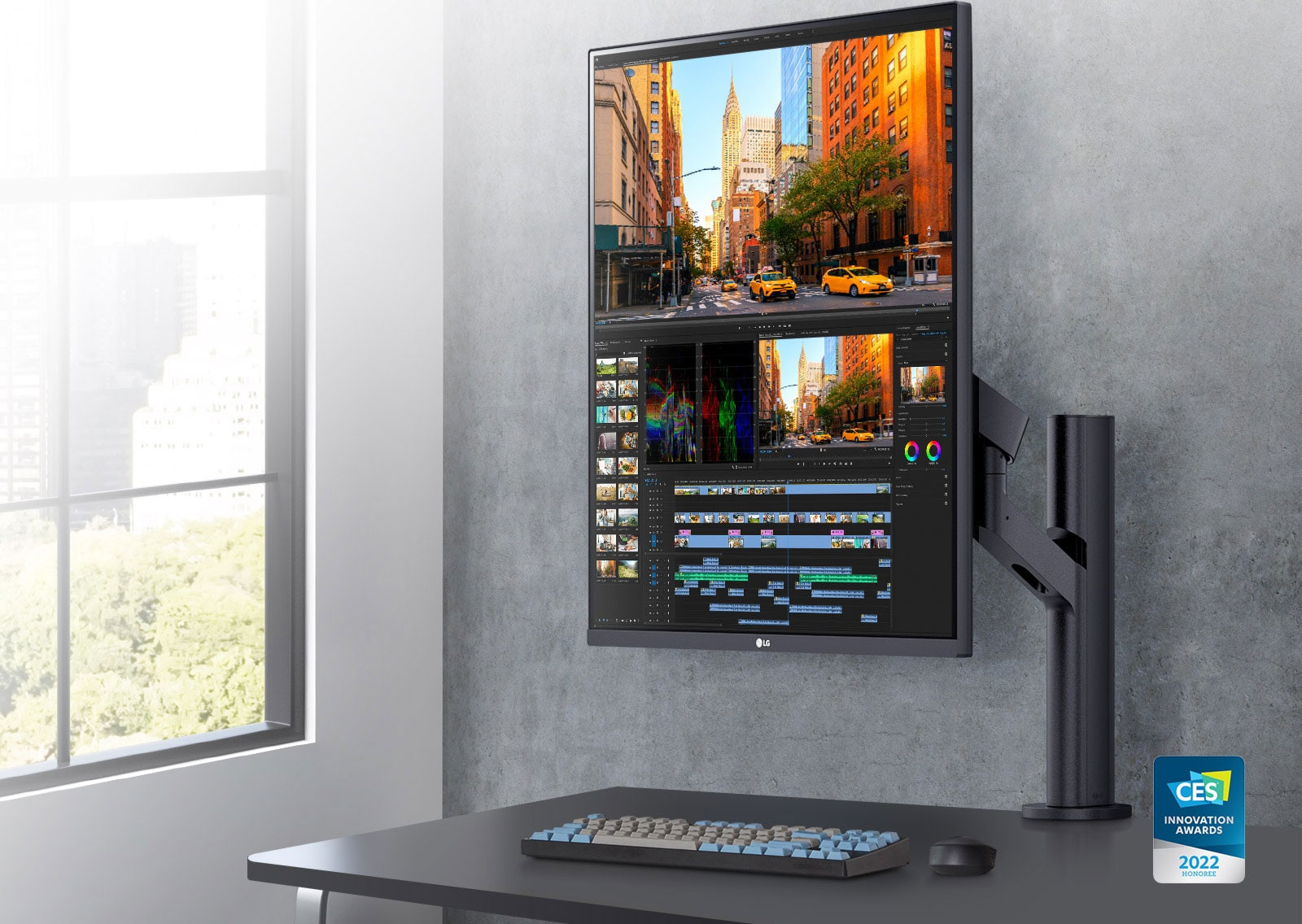LG's DualUp 16:18 Aspect Ratio Monitor Gets a Price
The almost square display is available now.
Today, LG announced that its almost square productivity orientated monitor is available to purchase. Originally unveiled last December, and showcased at CES 2022, the LG DualUp 28MQ780 can be purchased directly from LG.com and select authorized dealers for $699.
The DualUp a Nano IPS panel with a 16:18 aspect ratio and 2,560 x 2,880 pixels. The first "Square Double QHD" monitor.
After years of screens becoming wide, super wide and ultra-wide, a trend has kicked in to give users back some vertical resolution. This trend has been targeted at, and been particularly welcomed by, content creators and is most evident with creator and productivity focused laptops. Therefore it is good to see a mainstream player like LG, design and market an almost square display for desktop PCs.
Previous ultra-wide monitor makers have sometimes pitched designs to creatives as the superior equivalent of using twin identical monitors side-by-side. LG repeats this pitch, but with the proposition being equivalent to two traditional 16:9 widescreens placed one above another. In the LG DualUp's particular case they would be twin factory color calibrated QHD screens with 21.5-inch diagonals. This concoction results in a 16:18 aspect ratio monitor with 28-inch diagonal, and 2,560 x 2,880 pixels. LG asserts the DualUp 28MQ780 is a boon to multitasking.
LG's DualUp 28MQ780 isn't all about its aspect ratio. Several other factors make it a persuasive display option for content creators. We mentioned the Nano IPS panel technology, and the monitor also offers some good color and display performance per LG's specifications. Key stats include the DualUp's 98% DCI-P3 gamut coverage, and its support for HDR10 content. Less impressive are the fairly typical IPS 1000:1 contrast ratio and fairly low max brightness level of 300 nits. The 5ms GtG response time is probably adequate for its intended use, as may be the display's 60 Hz refresh rate.
There is quite an array of extra features here to help justify the $699 pricing. A picture-by-picture mode works with a built in KVM switch for easy dual system / single display use, sharing a single set of input devices. A good selection of color features and modes are available too, with modes like ambient auto brightness, reader mode, flicker safe, black stabilizer and low blue light available to toggle and adjust.
There is a decent selection of input options including the option to use USB-C for DP-Alt, power delivery and a built in USB data hub. The provided C-Clamp style stand is adjustable for tilting, height, swivel, pivoting, extending and retracting. You can also use your own VESA 100x100 mount. It is also convenient to have built-in speakers for system sounds and other non-critical audio monitoring.
Get Tom's Hardware's best news and in-depth reviews, straight to your inbox.
|
Model |
LG 28MQ780 |
|---|---|
|
Size |
27.6-inch |
|
Resolution |
SDQHD (2560 x 2880) |
|
Aspect Ratio |
16:18 |
|
Display |
Nano IPS |
|
Color Gamut |
DCI-P3 98 percent |
|
Brightness |
300 nits |
|
Contrast Ratio |
1000:1 |
|
HDR |
HDR10 |
|
Color Calibrated |
Yes |
|
Response Time |
5ms (GtG on Faster setting) |
|
Screen |
3-Side Virtually Borderless Design |
|
Stand |
Pivot / Height / Tilt / Swivel (Ergo 2nd Gen) |
|
Interface |
USB Type-C: DP Alt. + Power Delivery / 90W + data, HDMI x2, SP x1 |
|
USB Hub |
x1 Upstream / x2 Downstream |
|
Speaker |
Stereo Speaker with MAXXAUDIO® (7W x 2) |
|
Feature |
On Screen Control / PBP / Auto Brightness |

Mark Tyson is a news editor at Tom's Hardware. He enjoys covering the full breadth of PC tech; from business and semiconductor design to products approaching the edge of reason.
-
tim1724 So… basically this is half of a 5K monitor (such as the Apple Studio Display or the old 27" iMac).Reply -
anonymousdude Replylorfa said:16:18? Why isn't this stated as 8:9?
I'm gonna go with marketing. It's easier to explain 16:9 vs 16:18 than it is 16:9 vs 8:9. LG even says it's two stacked 16:9 monitors so it's natural to say 16:18. Not to mention bigger numbers sound better to you average consumer too.


